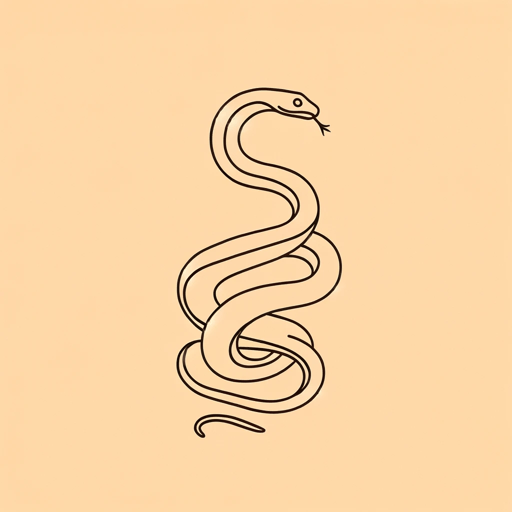36 pages • 1 hour read
Arthur Conan DoyleThe Adventure of the Speckled Band
Fiction | Short Story | Adult | Published in 1892A modern alternative to SparkNotes and CliffsNotes, SuperSummary offers high-quality Study Guides with detailed chapter summaries and analysis of major themes, characters, and more.
Summary and Study Guide
Summary: “The Adventure of the Speckled Band”
“The Adventure of the Speckled Band” is one of Sir Arthur Conan Doyle’s most famous short stories. Doyle dabbled in several genres and forms, including historical fiction, plays, and poetry, but his Sherlock Holmes mysteries are the chief reason his writing has been beloved around the world for over a century. Doyle’s work has had a profound influence on the genre of detective fiction, and the author considered “The Adventure of the Speckled Band” the best of all the Sherlock Holmes mysteries. Originally published in The Strand Magazine in 1892, the story explores the themes of greed, power, and loyalty.
This study guide refers to the February 1892 edition of The Strand Magazine.
Content Warning: The story contains incidents of domestic violence and abuse.
Dr. John Watson reviews his notes and shares the details of a case that occurred back in 1883. He prefaces the narrative by clarifying that he has not previously spoken of this case because he was sworn to secrecy. However, the unnamed woman he has promised is now deceased.
Early one morning in April 1883, Helen Stoner, a young woman dressed in black mourning clothes, comes to 221B Baker Street in London, the home of Sherlock Holmes and Dr. John Watson. Despite being in her early thirties, Helen’s hair is “prematurely grey,” and she is so afraid that she is shivering. She solicits Holmes, a private consulting detective, for his help. Holmes tries to soothe the woman’s fears and then demonstrates his famous mental faculties by deducing that she has traveled in a “dog-cart,” a type of horse-drawn carriage, based on the mud stains on her clothes. Although Helen is unable to pay Holmes for his services, he assures her that “[his] profession is its own award” (143) and encourages her to share her tale.
The reasons for Helen’s fear begin to come to light as she explains her family history to Holmes and Watson. Her father died when she was very young, and her mother, Mrs. Stoner, married a man named Dr. Grimesby Roylott when Helen and her twin sister, Julia, were only two years old. Dr. Roylott is the last living member of what was once a wealthy and respectable aristocratic family. However, the Roylotts’ riches have deteriorated under the mismanagement of generations of wasteful and immoral heirs. Dr. Roylott tried to improve his finances by establishing a medical practice in Calcutta, but he murdered his Indian butler in a fit of rage and was thrown in prison. After his release, Dr. Roylott returned to England with his wife and his two stepdaughters. Mrs. Stoner died soon afterward, leaving behind a fortune. However, Helen and her sister can only receive their portion of the inheritance if they marry. Until then, the money belongs to their stepfather.
Helen explains that her woes continued after her mother’s death. Her stepfather took her and Julia to live in Stoke Moran, the Roylott family’s derelict manor, and his behavior took an alarming turn: He secluded himself in the manor, emerging only to start violent brawls with his neighbors and cavort with the “gipsies” he allows to camp on his estate. (Please note that the word “gypsies” is an exonym with pejorative connotations. From here on, this study guide will refer to the members of this nomadic ethnic group by their preferred name, the Romani.) Adding to the danger and strain of Helen’s living situation, the doctor imports wild animals, including a cheetah and a baboon, and lets them roam freely.
After providing this background information about her family, Helen says that she came to London because she wanted to discuss the strange circumstances surrounding her twin sister’s death. She also wishes to ask Holmes for advice because she fears her own life is now in danger. Julia passed away two years ago, and her death occurred two weeks before she was to be married. Helen recalls how Julia’s bedroom stood between Helen’s room and Dr. Roylott’s room. On the night of her death, Julia complained about the smell of their stepfather’s cigars seeping into her bedroom and mentioned that a low whistle had awoken her the past three nights. Helen had not heard the sound, but she thinks that the noise was likely caused by the Romani camping on the lawn. After Julia retired to her own room, Helen heard three disconcerting sounds in quick succession—her sister’s screams, a low whistle like the one Julia had described, and a metallic clang. Pale and wracked with convulsions, Julia collapsed into her sister’s arms, where she uttered her last words: “It was the band! The speckled band!” (146). Helen remains uncertain of the meaning of her sister’s last words, but she suspects that her sister was somehow frightened to death by the Romani, some of whom wear spotted handkerchiefs. The coroner investigated Julia’s death but found no evidence of foul play. The door, windows, and chimney were all secured, so no one could have broken into her room.
Recently, Helen has become engaged to a friend of hers named Percy Armitage. In another recent development, a construction project on Stoke Moran has forced her to move into her sister’s old room. Last night, she heard the very same whistle that she heard on the night of her sister’s death. Terrified, she immediately journeyed to London to seek Holmes’s help. He is her only recourse; she cannot turn to her fiancé because he does not take her fears seriously.
After Helen concludes her account, Holmes asks if she has omitted anything. When she denies doing so, he points out the bruises on her wrist and says she is shielding Dr. Roylott. Helen makes excuses for her stepfather’s behavior, and Holmes lapses into a pensive silence. Both Holmes and Watson promise to come to Stoke Moran and investigate the case that afternoon.
Soon after Helen leaves the Baker Street residence, Dr. Grimesby Roylott himself bursts through the door. Knowing that his stepdaughter has enlisted Holmes’s help, Dr. Roylott tries to scare him off the case by twisting an iron poker with his bare hands. Far from intimidating the detective, the intrusion only makes Holmes more eager to unravel the mystery. Before leaving London, Holmes examines Mrs. Stoner’s will and discovers that the inheritance has shrunk so much that Dr. Roylott’s income would decrease significantly if one or both of his stepdaughters married.
With this confirmation of the doctor’s motive, Holmes and Watson journey to Stoke Moran. While investigating Julia’s old room, Holmes observes some peculiar improvements that were made shortly before the woman’s death. A ventilator now goes from Dr. Roylott’s room to Julia’s when it should have been positioned to bring in fresh air instead. A new bell-pull placed near this ventilator hangs beside Julia’s bed, but the rope is not attached to a bell. In addition, the bed is clamped to the floor so that it cannot be moved. The investigation continues in Dr. Roylott’s room, where they find a saucer of milk on top of a heavy safe and a whip tied into a loop.
Holmes concocts a plan for the detective duo to spend the night in Julia’s old room. He instructs Helen to lock herself in her room, and Holmes and Watson withdraw to a nearby inn and wait until nightfall. Holmes expresses misgivings about leading his friend into danger, but Watson assures Holmes that he will accompany him since he may be of assistance during the perils ahead. At Helen’s signal, a lit lamp, Holmes and Watson stealthily enter the grounds of Stoke Moran. The baboon gives them a fright, but they sneak into Julia’s old room without Dr. Roylott noticing their presence. There they wait in complete darkness until they hear something hissing at about three in the morning. At the sound, Holmes strikes a match and lashes at the bell-pull with his cane, but Watson cannot see what his friend is attacking. Soon a scream erupts from Dr. Roylott’s room. There Holmes and Watson find the doctor’s lifeless body with “a peculiar yellow band, with brownish speckles” (155) wound around his forehead. Holmes identifies the “speckled band” as a venomous snake from India and muses, “Violence does, in truth, recoil upon the violent” (156).
In the morning, Helen goes to stay with her aunt. The official police inspection rules that Dr. Roylott died playing with a dangerous pet. With the case closed, Holmes and Watson return to London. During their journey, the detective admits that his first hypothesis was incorrect; he had thought the Romani camping on the manor’s grounds were responsible for Julia’s death. However, his investigations at Stoke Moran yielded new evidence, and he realized that Dr. Roylott had trained a venomous snake to enter his stepdaughter’s room through the ventilator and climb down the bell-pull to the bed. The whistle was the snake’s signal to return to its master, and the metallic clang that Helen heard on the night of Julia’s death was her stepfather shutting the snake inside his safe. Dr. Roylott hoped that the snake would kill Helen just as it had killed Julia, leaving him in possession of their entire inheritance. Holmes tells Watson that he is indirectly responsible for Dr. Roylott’s death because he angered the snake and forced it back through the ventilator. However, he doubts the doctor’s death will trouble his conscience.
Related Titles
By Arthur Conan Doyle

A Case Of Identity
Arthur Conan Doyle

A Scandal in Bohemia
Arthur Conan Doyle

A Study in Scarlet
Arthur Conan Doyle

His Last Bow
Arthur Conan Doyle

The Adventures of Sherlock Holmes
Arthur Conan Doyle

The Hound of the Baskervilles
Arthur Conan Doyle

The Lost World
Arthur Conan Doyle

The Sign of the Four
Arthur Conan Doyle

The Valley of Fear
Arthur Conan Doyle

